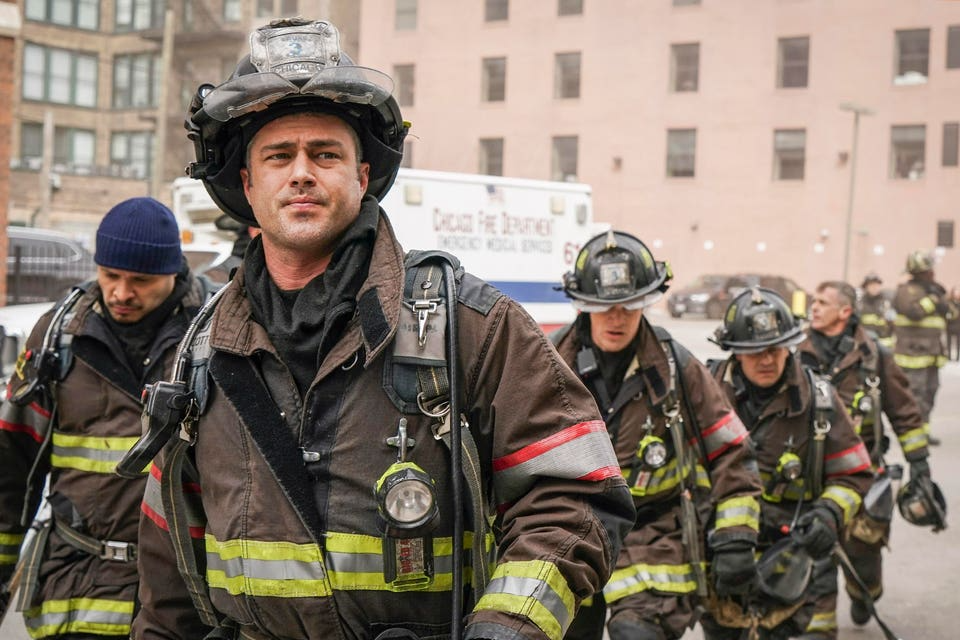
Chicago Fire has been one of the most exciting and action-packed shows on television for over a decade. With heart-pounding rescues, emotional moments, and dynamic character arcs, it has captivated audiences season after season. But here’s the thing – for 13 seasons, there’s been one crucial detail that has flown under the radar of even the most devoted fans.
Despite being a prominent part of the show’s storyline, this detail has been quietly snuck past viewers. But now, after all these years, fans are starting to realize it, and the revelation is causing quite the stir. So, what is this key detail, and why has it been so subtle throughout Chicago Fire’s long run?
In this article, we’ll dig deep into this intriguing hidden aspect of Chicago Fire, examine how it has affected the story over the years, and explore why it took so long for fans to finally notice. Let’s get into it!
The Unsung Detail: What’s Been Hiding in Plain Sight?
It’s not uncommon for TV shows to drop small details in plain sight, waiting for the right moment to have them revealed. In the case of Chicago Fire, this crucial element has been right under fans’ noses for 13 seasons, influencing storylines, character decisions, and even the overall tone of the series.
The Detail Fans Missed: The Significance of Firehouse 51’s Personal Dynamics
At its core, Chicago Fire isn’t just about fires, rescues, and explosions. It’s about the relationships between the firefighters, paramedics, and everyone else working at Firehouse 51. The true heart of the show lies in these personal dynamics – the friendships, the rivalries, the romances, and, most importantly, the emotional struggles each character faces. While this has always been clear, there’s one subtle element that fans never truly caught on to.

How Firehouse 51’s Personal Dynamics Shape the Show
Chicago Fire thrives on the emotional bonds that form among its characters, and these dynamics are key to the show’s success. But there’s something more beneath the surface. The way Firehouse 51 operates, the way decisions are made, and even the interpersonal struggles all hinge on a deeper element that fans often overlook.
The Hidden Influence of Leadership Styles
One of the critical elements that has been silently influencing everything at Firehouse 51 is the hidden aspect of leadership. Whether it’s Chief Boden’s calm and steadfast leadership or Casey’s natural ability to inspire others, the leadership style within the firehouse plays a central role in how the team functions.
While it’s obvious that Boden and Casey are key leaders, what many fans fail to realize is how the leadership style impacts not just the team’s actions in emergencies but also their personal lives. These leadership dynamics subtly shape how the team interacts and reacts to crises, fostering a level of loyalty and dedication that goes beyond just the job itself.
How This Detail Has Affected Major Story Arcs
While the subtle detail of leadership dynamics and personal relationships at Firehouse 51 might seem minor, it’s actually played a huge role in several major plotlines throughout the show. From life-and-death situations to personal betrayals, these interpersonal dynamics have shaped key moments that fans have loved and been invested in.
The Impact of Personal Sacrifices on Storylines
One of the most compelling aspects of Chicago Fire is its portrayal of personal sacrifices. Characters like Severide, Brett, and Cruz have made significant sacrifices for their colleagues, and it’s all rooted in the trust and loyalty that are the backbone of Firehouse 51. These sacrifices might seem like just heroic acts in the heat of the moment, but the leadership dynamics set up the foundation for these decisions.
Think about some of the most intense moments in the show – many of them hinge on the unspoken bonds between team members. These moments are driven by the subtle influence of leadership styles and personal relationships that fans never really connected to the broader storylines.
Why Fans Are Just Realizing It Now
So, why is it that fans are only now noticing this crucial detail after 13 seasons? The answer lies in the nature of long-running shows. As time goes on, viewers become more familiar with the characters and the show’s tone, which often allows them to notice the subtle layers that were once hidden. With the current season pushing the boundaries of emotional storytelling, it’s possible that fans are now more attuned to the subtle intricacies that shape Firehouse 51’s inner workings.
The Evolution of Fan Engagement
Over the years, the fandom of Chicago Fire has grown exponentially. From online forums to social media discussions, fans are now more engaged than ever before. This increased engagement has led to deeper discussions and analysis of the show, allowing viewers to connect the dots between the leadership dynamics and the personal stakes within the firehouse.
The Subtle Shift in Tone: How This Detail Affects the Show’s Overall Atmosphere
As fans look back over the show’s 13 seasons, they’ll notice that there’s been a subtle shift in tone over the years. Early seasons were filled with action-packed rescues and life-threatening situations, but as the show evolved, the emotional depth of the characters became more prominent. This shift was largely influenced by the unspoken leadership dynamics at Firehouse 51, which have been building since the very beginning.
The Role of Crisis in Character Development
One of the key themes that has been slowly developed throughout Chicago Fire is how characters grow in response to crisis. Whether it’s dealing with the aftermath of a traumatic rescue or coping with the loss of a colleague, each crisis brings out different aspects of the characters’ personalities. The subtle but powerful leadership dynamics at Firehouse 51 influence how each firefighter faces these challenges, creating more realistic, nuanced character development over time.
What This Means for the Future of Chicago Fire
As Chicago Fire heads into its next seasons, it’s clear that the personal dynamics at Firehouse 51 will continue to be a driving force behind the show. With this subtle detail now fully realized by fans, it’s likely that the show will continue to build on these themes, deepening the emotional and relational stakes for the characters.
Rising Stakes: The Future of Relationships at Firehouse 51
With this crucial detail now brought to the forefront, we can expect to see more focus on the emotional relationships between the characters. Whether it’s Casey’s leadership struggles, Boden’s mentorship role, or Severide’s personal growth, these dynamics will continue to play a central role in the direction of the show.
The Lasting Legacy of Firehouse 51’s Hidden Dynamic
While it may have taken 13 seasons for fans to fully recognize the significance of these interpersonal dynamics, Chicago Fire has masterfully woven this crucial element into the fabric of the show. Now that it’s been unveiled, it’s clear that this detail has been integral to the show’s success and will continue to shape its legacy.
The Show’s Impact on Fans and Real-World Firefighter Relationships
Chicago Fire has always portrayed the complex relationships within a firehouse, offering viewers a glimpse into the emotional and mental struggles of firefighters. This level of depth and authenticity has made the show more than just a procedural drama – it’s a representation of the human side of these first responders.
Conclusion: A Quietly Powerful Detail That Defined Chicago Fire
For 13 seasons, Chicago Fire has quietly hidden a crucial detail that has shaped every moment, every character, and every story arc on the show. The intricate dynamics of leadership, sacrifice, and personal relationships within Firehouse 51 are what make the show resonate so deeply with its viewers. As fans begin to realize just how central this detail is to the series, we can expect even more emotional depth and exciting twists in the seasons to come.
FAQs
1. What’s the crucial detail in Chicago Fire that fans missed?
The hidden detail lies in the subtle leadership dynamics and personal relationships within Firehouse 51, which have been shaping the storylines and character development since the show began.
2. Why is this detail only becoming apparent now?
The increased engagement from fans over time, coupled with the evolution of the show’s emotional depth, has led viewers to notice the significance of these interpersonal dynamics.
3. How does this detail affect the character arcs on Chicago Fire?
The leadership dynamics influence how characters handle crises, develop emotionally, and make sacrifices for one another, creating a deeper, more nuanced show.
4. What will happen in future seasons now that this detail is revealed?
Fans can expect more focus on the relationships at Firehouse 51, with an emphasis on emotional growth and leadership struggles.
5. How does Chicago Fire portray real-life firefighter relationships?
The show provides a realistic portrayal of the emotional and personal challenges that firefighters face, deepening the connection between the audience and the characters.
